Santería Etiquette 101: Attending a Wemilere
- Omimelli

- Jul 29, 2020
- 9 min read
Updated: Jul 30, 2020

This article originally was posted nearly eight years ago on http://blog.themysticcup.com, this site no longer exists and has transitioned to The Mystic Cup. The revised post was published this week has been edited thanks to the input from oloshas who constructively pointed out areas of improvement. Their concern, kindness, and desire to contribute to building and helping me improve are exemplary. They stood out from others who offered negative criticism and made no suggestions for improvement. Such a stark contrast. No one is born all-knowing, and those who criticize and not contribute, fall short and are often times are blind to their own gross imperfections. I am taking a moment to ask Olofi to bless them to test their metal and character. Courtesy and manners may be just the first lessons they need to learn.
Speaking of courtesy and manners, those are two elements that will distinguish favorably any person wishing to be accepted and appreciated in any African Traditional Religion circle.
When it comes to Santería, it is crucial to remember that the behavior of a godchild or a guest will reflect directly on the person who has extended the invitation to that public function. What best place to display impeccable civility than when attending a Wemilere (tambor in Spanish) or drumming?
The Wemilere is a ritual celebration to honor a particular Orisha. The celebration will be lengthy and attendants are expected to remain at the event until the last part of the ritual. Here are some basic things anyone attending a Wemilere must observe.

Dress Code
Aborishas, * aleyos**, Oloshas***, and Babalawos will never go wrong wearing their best whites However, even if white is the preferred color, attendees may also wear any color as long as it is not a dark color or black.
However, there are instances that a person will come dressed in a particular outfit because it has been marked during reading and thus, the colors and style selected become in itself an ebó (ritual working) to hopefully bring the desired outcome for that individual. Thus, one must not be quick to judge the book by the cover.
Ladies can choose to wear a dress or a combination of a top and skirt. In any case, the length of the skirt or dress and the fit should be ¾ length or long avoiding tight/form-fitting skirts. It is recommended to wear shorts underneath. It is practical to have a skirt that allows for dancing and properly saluting without the embarrassment of showing the world other people. The top row of the illustration below presents appropriate selections and the bottom row has ideas of garments to avoid wearing.
A ladies' top should be modest sleeved, avoid showing off the bosom and see-through materials. The top row on the illustration below has suggested blouses and the second row presents what should be avoided.
Ladies should cover their heads with a turban, handkerchief, a headwrap, or a scarf as presented below in that order from the left.
Shoes should allow for dancing and standing up for hours on end. Wemileres are usually crowded, thus, having a hand fan and a handkerchief is always a plus. The head should be covered as well with a cloth or handkerchief.
Gentlemen should wear long comfortable fitting pants, a dress shirt or a Guayabera, a cap, and comfortable shoes, all in white. Everyone loves a sharp-dressed man!
It is rather common to see that Oloshas also wear caps and handkerchiefs representing the colors of their Orishas or even dress using highlights of the color emblematic to their orisha alagbatori. Below are a couple of examples I have made of a hat to Eleguá, made for my son Ayótomíwá, one to Babalú Ayé, and one inspired on the colors of Shangó and Oshún.
Other important emblems include the elekes (sacred orisha beads). Those who are omó elekes (aborishas who have received the elekes) must wear them at the Wemilere. The five basic elekes are for Eleguá, Obatalá, Shangó, Yemayá y Oshún.
Dress code is also important for omó Añá (children on Añá or the deity of the drum and drummers). It is rather common to see drummers and even the Akpwón not dressed in white and sporting dark glasses. It is the responsibility of the person hiring the drummers to establish a dress code and see that it is observed, particularly because they are the center of an important ritual and must set an example of propriety to the community.
During these difficult times we are living with COVID-19 and social distancing, attending a Wemilere is a risk. However, if you decide to attend one, please wear a face mask and observe hygiene rules.
Normally a batá drumming starts early afternoon. The beginning of the event is not normally attended by the general congregation and guests and it is called the Oro Seco or drumming played in front of the throne that has been erected for the orisha being honored.
During the Oro Seco or Oro Igbodú, no one dances or sings, the music is solely for the orisha. If for example, the drum is in honor or Shangó, the order of the Oro Seco will consist of rhythms to salute Elegba, Ogún, Ochosi, Obaloke, Inle, Babalú Ayé 1, Babalú Ayé 2, Osain, Osun, Obatalá, Dada, Ogue, Aggayú, Orunmila, Orisha Oko, Ibeji, Yegguá, Oyá, Oshún, Yemayá, Obba, Shangó, Odudua.
Following the Oro Igbodú, it is time for the Alashé Orisha to shine. The alashé Orisha is the cook who has been working for countless hours preparing a delicious meal for the party and for the first group to savor it, the omó Añá who must gather strength from this offering to play for the congregation. This meal has its rituals and it is a solemn and happy feast to behold.
After the meal, the omó Añá move away from the ritual room to a larger room to have space for the congregation to listen and dance, this could be indoors or outdoors.
The second part of the ceremony, oro cantado or drumming with songs of praise to each of the orishas. Following the case of drumming to Shangó, the order would be as follows: Eleguá, Ogún, Ochosi, Inle, Babalú Ayé, Osain, Orisha Oko, Obatalá, Dada/Korinkoto/Ogue, Ibeji, Aggayú, Obatalá, Obba, Yegguá, Oyá, Yemayá, Oshún, Orunmila, Shangó.
The third part of the drumming is the eyá aranlá or the tambor abierto (open drumming). This involves the congregation at large. Here the Akpwón is free to select whom to sing for according to which priestess are in attendance. It is the Akpwón’s choice to select which Orisha he will sing to in order of hierarchy. For example, the Akpwón may select to sing as follows: Eleguá, Ogún, and Ochosi, then Obatalá, Oshún, Yemayá, and Shangó.
Here is the opportunity for attending priests and priestesses to salute the drums with balé (bowing down) on the floor right in front of the drummers and then touching with their forehead each of the instruments in the following order: Iyá (mother drum, the largest in size), Okonkolo (small-sized drum), and then Itotele (middle-sized drum). The priests will also dance to the music being played to their orisha. Normally this process takes about 5 minutes or more depending on how many oló orishas are saluting.
There is yet one more part to the eyá aranlá, this part has a chain of songs to individual orishas. It is the job of the Akpwón to use his knowledge of language, lyrics, and rhythm to coax, tease and praise the Orisha to join the omó orisha (children of the orisha) to walk amongst them.
There is an oloshas who has been hired for his/her ability to allow the process of trance possession. This priest/ess will dance in front of the batá to hopefully allow the orisha to manifest. The desired outcome is for this orisha to manifest but it does not always happen.
Once an orisha has arrived taking possession of an Olosha, both the Iyá drummer as well as the Akpwón must pay close attention to the changes in rhythm that the orisha may request. As more orishas descend, more are the demands on the singer and the drummers to keep up with each of them.
The same way that the drummers follow a protocol with their songs and music cycles, so must the attendees. The order in which the dance floor is organized denotes rank and age. There is nothing more embarrassing for a host than to see aleyos and aborishas pushing their way to be in front of the drums. That is simply a faux pass that shows a complete lack of cultural knowledge and preparation to attend an event such as this. Anyone inviting a person to a Wemilere must also explain the rules of the drumming.
The Order of Dancers
People who have Kariosha can dance front and center; they, however, should yield the best spots to those who are elders. The Oloshas who are children of the house where the Wemilere is being held can be on the front row of dancers.
I will underscore, it is considered extremely rude to have aleyos and aborishas pushing their way to the front of the dance floor.
People do not go to a Wemilere to dance just to get a workout. Their dance is a ritual, the mere act of dancing is an act of surrendering their bodies to the will of their tutelary orisha who may or not select to mount any of those Oloshas dancing. The process of trance possession can be rough and those who are not trained to deal with it should simply stay out of the way. Likewise, I have seen lots of Oloshas lined up in front of the drums to dance but not willing to surrender to the will of the Orisha. If one has the right to stand front and center, then one also has the responsibility to allow the orisha to manifest and not to fight off an impending possession.
The Orisha arrives!
Let’s say that the Wemilere is dedicated to Shangó. A horse of Shangó will be invited to dance for the orisha and ceremonial clothes will be prepared for that person. There are rules the dancer must follow prior to the Wemilere, one of them is meditation and the other is sexual abstinence for a period of at least 24 hours. The idea is to prepare the vessel for the Orisha. The body must be cool and clean, the orí of the dancer must have been fed prior to the batá as well. By the way, if I am invited to a Wemilere, I observe the same rule a dancer would because as an Olosha I want to have my body prepared in case Yemayá decides to come down through me.
When the honored orisha arrives at a Wemilere, the process is one of ecstasy and joy, at least for me it is. Once the Orisha salutes the drums he or she will ask to be dressed in its ashó orisha (ceremonial garments). The orisha that is being honored will continue then to dance and help to entice other orishas to come and join the celebration. The orisha may also choose to speak to its children, cleanse them, dispense advice, and on some occasions, public punishment.
Avoiding a colossal faux pas
I know that being in the presence of the Orisha is like being in the presence of a rock star, however, it is imperative to have self-control and exercise impeccable manners. It is a huge NO NO to be following the orisha around in hopes that the orisha will speak to you. If the orisha has a message, he or she will not return to heaven without delivering that message. It is quite annoying to see aborishas, aleyos, and even Oloshas crowding the orisha and creating complications for the person assigned to attend the orisha while on earth.
What to do if an orisha addresses you?
Make sure you have someone at hand to help you translate what the orisha is saying; most will speak in a mix of Lukumí, Spanish, and even English. After all, the orisha will use whatever the brain of the horse has stored in its brain cells to communicate as best as possible. Sometimes the orisha may do interesting things such as asking for money and redistributing it to other people who may have more need of it than you do. Sometimes, an orisha may take a fancy to something you are wearing or have in your hands.
I remember one time I had this fancy agbebe (fan), a pretty delicate custom-made piece, but alas Oyá took note of it and extended her hand to me asking for my fan. What did I do? I closed my fan, bowed my head to Oyá, and placed it in her hands without hesitation. She went about the room cooling her horse by fanning herself, chatting with folks, and then came to me and cleaned the sweat off her horse’s forehead with my fan and placed it back in my hands with a blessing. Who would like to oppose the wishes of a formidable orisha like Oyá and miss out on potential blessings?
Closing Ceremony
After all the orishas have dispensed their advice a daughter of Yemayá will get a bucket of water and dance it to the street. This is a very important ritual as she will lift all negativity taking it to the street where she pours out the bucket. The omó Añá also will have a final set of songs to close the batá. First, there will be an oro Eggún (music to the ancestors) and then the Akpwón sings to Eleguá/Eshú, ancestral spirits, and Olokun.
It is recommended that all attendees remain in the house until the full drumming has concluded as the ritual is also a communal cleaning and all energies need to be properly settled and dispersed before people depart.
After the drumming people are free to socialize and enjoy a meal served traditionally at the end of the event.
There are more details and intricacies about the Wemilere, but most are left to initiates and observed behind closed doors, not because they are ‘secrets’ to be held away from non-initiates, but rather private moments between orisha and those who have made the ultimate commitment to honor them with their lives.
Omimelli Oní Yemayá Achagbá
Footnotes:
*A person that nourishes the Orisha, also seen as someone who has received at least one or two initiations such as elekes and/or Warriors.
**A non-initiate.
***Initiated priest or priestess in the Orisha/Santería.



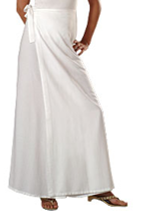
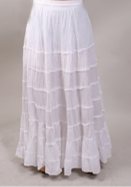
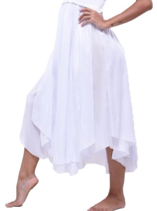


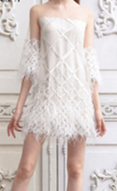

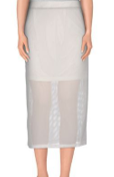
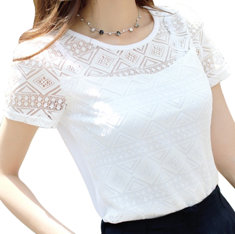
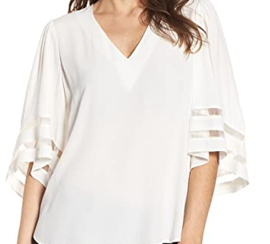





























Comments